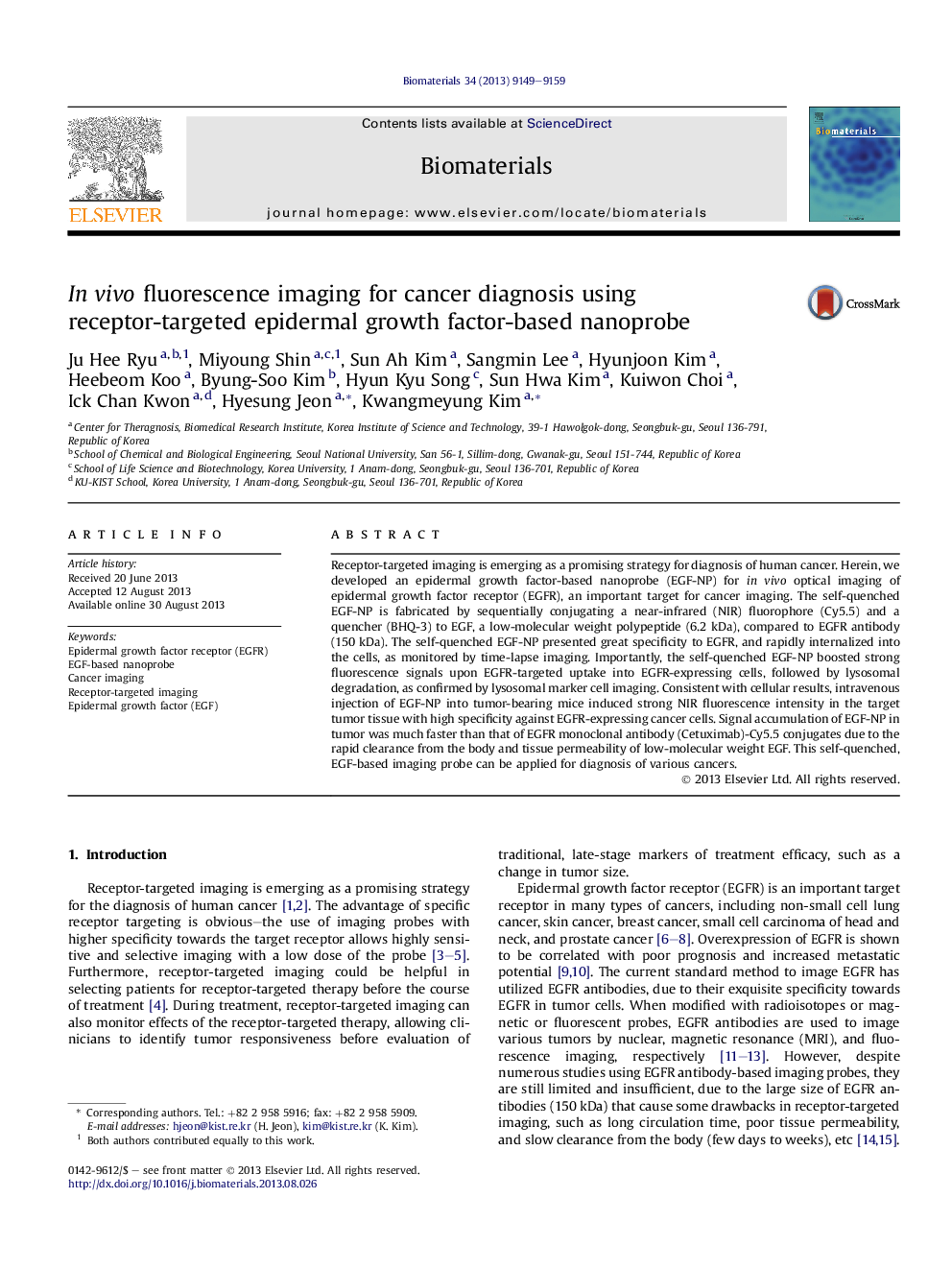| Article ID | Journal | Published Year | Pages | File Type |
|---|---|---|---|---|
| 10228330 | Biomaterials | 2013 | 11 Pages |
Abstract
Receptor-targeted imaging is emerging as a promising strategy for diagnosis of human cancer. Herein, we developed an epidermal growth factor-based nanoprobe (EGF-NP) for in vivo optical imaging of epidermal growth factor receptor (EGFR), an important target for cancer imaging. The self-quenched EGF-NP is fabricated by sequentially conjugating a near-infrared (NIR) fluorophore (Cy5.5) and a quencher (BHQ-3) to EGF, a low-molecular weight polypeptide (6.2 kDa), compared to EGFR antibody (150 kDa). The self-quenched EGF-NP presented great specificity to EGFR, and rapidly internalized into the cells, as monitored by time-lapse imaging. Importantly, the self-quenched EGF-NP boosted strong fluorescence signals upon EGFR-targeted uptake into EGFR-expressing cells, followed by lysosomal degradation, as confirmed by lysosomal marker cell imaging. Consistent with cellular results, intravenous injection of EGF-NP into tumor-bearing mice induced strong NIR fluorescence intensity in the target tumor tissue with high specificity against EGFR-expressing cancer cells. Signal accumulation of EGF-NP in tumor was much faster than that of EGFR monoclonal antibody (Cetuximab)-Cy5.5 conjugates due to the rapid clearance from the body and tissue permeability of low-molecular weight EGF. This self-quenched, EGF-based imaging probe can be applied for diagnosis of various cancers.
Related Topics
Physical Sciences and Engineering
Chemical Engineering
Bioengineering
Authors
Ju Hee Ryu, Miyoung Shin, Sun Ah Kim, Sangmin Lee, Hyunjoon Kim, Heebeom Koo, Byung-Soo Kim, Hyun Kyu Song, Sun Hwa Kim, Kuiwon Choi, Ick Chan Kwon, Hyesung Jeon, Kwangmeyung Kim,
